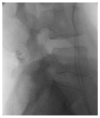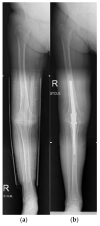The Surgical Treatment of Osteoarthritis
- PMID: 35888072
- PMCID: PMC9319328
- DOI: 10.3390/life12070982
The Surgical Treatment of Osteoarthritis
Abstract
Osteoarthritis is a degenerative condition affecting the whole joint with the underlying bone, representing a major source of pain, disability, and socioeconomic cost worldwide. Age is considered the strongest risk factor, albeit abnormal biomechanics, morphology, congenital abnormality, deformity, malalignment, limb-length discrepancy, lifestyle, and injury may further increase the risk of the development and progression of osteoarthritis as well. Pain and loss of function are the main clinical features that lead to treatment. Although early manifestations of osteoarthritis are amenable to lifestyle modification, adequate pain management, and physical therapy, disease advancement frequently requires surgical treatment. The symptomatic progression of osteoarthritis with radiographical confirmation can be addressed either with arthroscopic interventions, (joint) preservation techniques, or bone fusion procedures, whereas (joint) replacement is preferentially reserved for severe and end-stage disease. The surgical treatment aims at alleviating pain and disability while restoring native biomechanics. Miscellaneous surgical techniques for addressing osteoarthritis exist. Advanced computer-integrated surgical concepts allow for patient personalization and optimization of surgical treatment. The scope of this article is to present an overview of the fundamentals of conventional surgical treatment options for osteoarthritis of the human skeleton, with emphasis on arthroscopy, preservation, arthrodesis, and replacement. Contemporary computer-assisted orthopaedic surgery concepts are further elucidated.
Keywords: CAOS; ankle and foot; computer-assisted orthopaedic surgery; elbow; hip; knee; osteoarthritis; shoulder; spine; wrist and hand.
Conflict of interest statement
The authors declare no conflict of interest. The funders had no role in the design of the study; in the collection, analyses, or interpretation of data; in the writing of the manuscript, or in the decision to publish the results.
Figures




















References
-
- Ebell M.H. Osteoarthritis: Rapid Evidence Review. Am. Fam. Physician. 2018;97:523–526. - PubMed
Publication types
LinkOut - more resources
Full Text Sources

